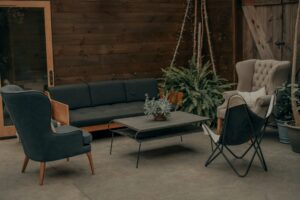Use One or a Few
There is no rule that says you have to limit yourself to a single rug in the living room. Designers often use multiple rugs in larger rooms to define different areas. So how do you know whether one or a few is best?
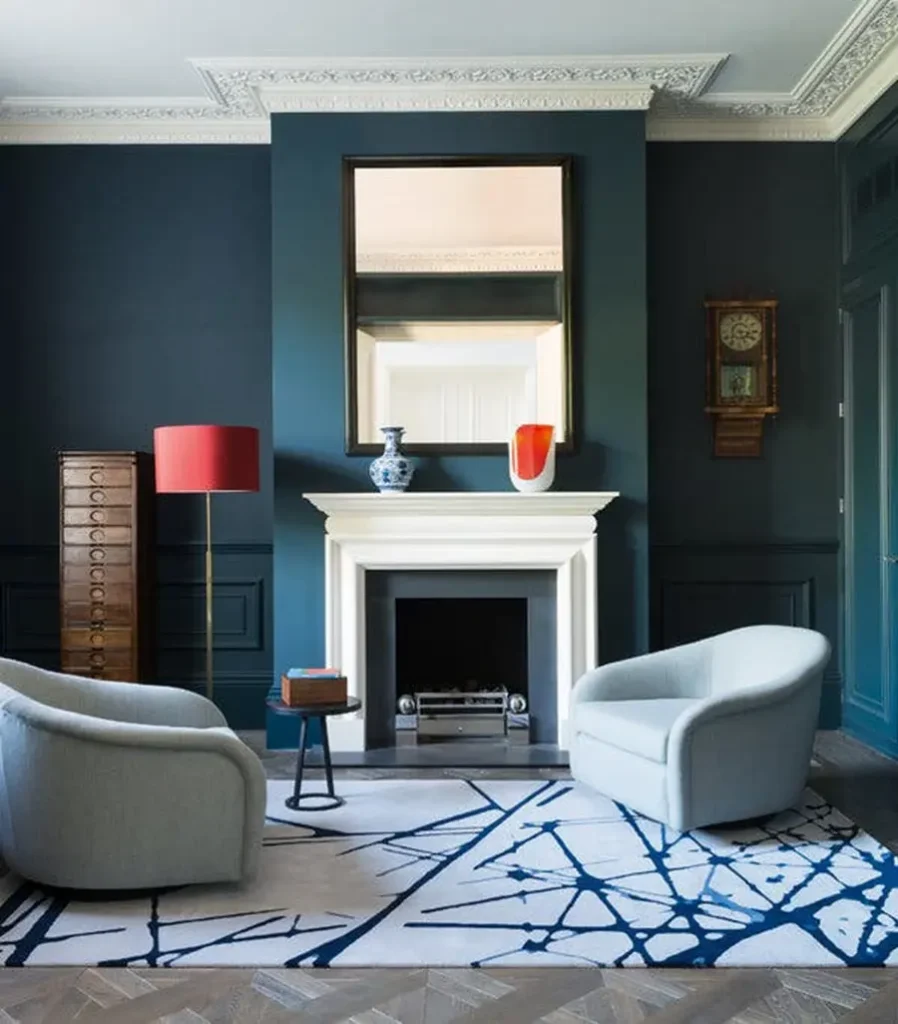
A boldly patterned rug can serve as the defining feature of a living area. (The Bridge hand-knotted wool rug, above, is from the sadafgroup Company.)

Smaller spaces, and living rooms enclosed by walls and doorways, usually benefit from a single large rug.
“I’m often dealing with apartments where the goal is to expand the sense of usable space in a living room.
Determine the Size
Choose a size that either completely covers the walkway or leaves the floor exposed where people need to pass by. Then decide how far beyond the furniture the rug should extend. A common way to size a rug is to ensure that it reaches underneath all four feet of all the furniture.
Or you could use a smaller rug that runs under the front feet of the sofas and chairs, and stops there. Just make sure that smaller objects at the rug’s edges, like end tables and floor lamps, are completely on or off the rug, “You don’t want unbalanced, rocking end tables every time you put something down.”
What about small rugs that float in the center of a room, untethered by sofa and chair legs? Many experts advise against them.
“Small rugs look a little bit lost and unfinished,

Choose Patterned or Plain
A boldly patterned rug can serve as the defining feature of a living area, but because it has so much impact, it’s a choice that requires courage. Deciding whether to go with a graphic statement rug or something more understated comes down to personal preference, as well as your overall design vision and where your home is.
“In the city, oftentimes clients will want to invest in an antique carpet from an auction or one of the great rug vendors as a showpiece,
If you decide to shop for a patterned rug, there are endless choices available, from free-form contemporary designs to more traditional ones. But if you’d rather keep it simple, there are plenty of opportunities to introduce pattern at a smaller scale.
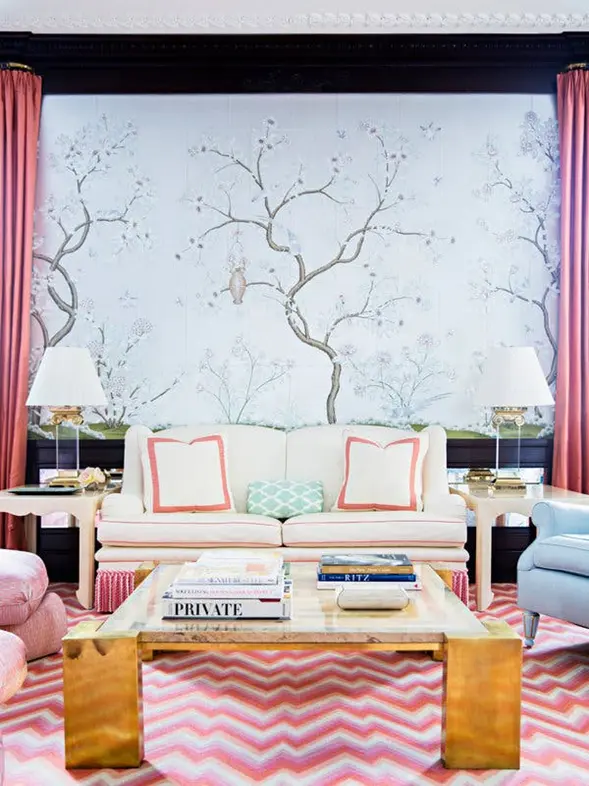
Pick a Material
Rugs come in many materials, including plant-based fibers like cotton, linen, sisal, jute and allo; downy, natural fibers like wool, silk and mohair; and synthetic materials like nylon and solution-dyed acrylic. There are also nonwoven rugs made from stitched-together materials like cowhide.
Each offers a different look and feel, with varying characteristics related to how well the materials wear and how easy they are to clean. They also range widely in price.
Rugs made from plant-based materials are often among the most affordable and offer an easy, casual look. But different fibers have different durability: Cotton and linen, for instance, age fairly quickly, while sisal and allo can take more abuse.
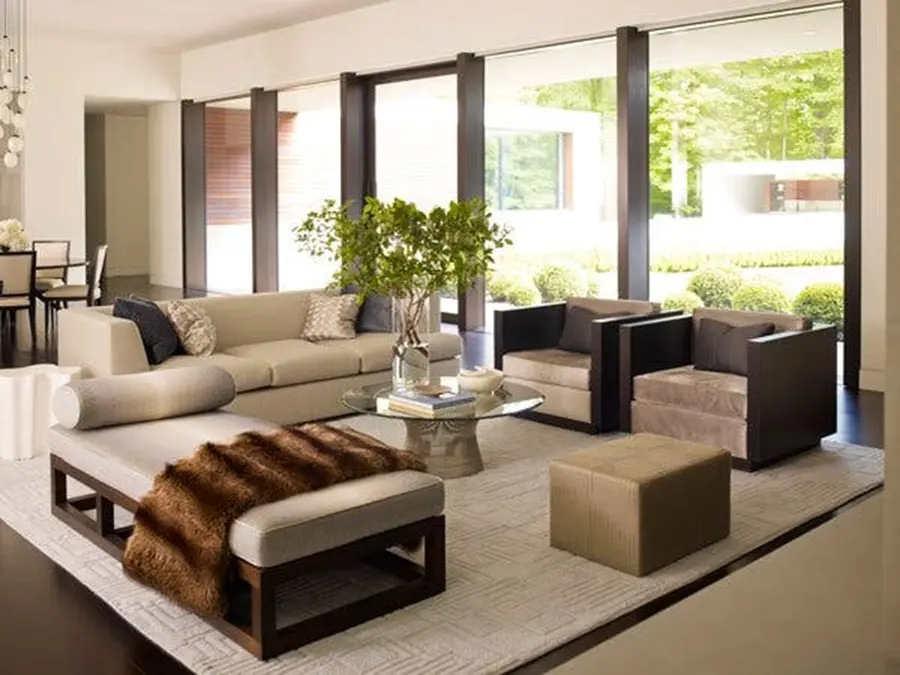
One of the most popular materials is wool, which can offer a range of looks depending on how it’s handled, from thin, flat weaves to hairy, hand-knotted shags. Wool tends to be more expensive than most plant-based materials, but it is stain resistant, softer underfoot and durable enough to last for centuries.
“Wool has lanolin in it, which makes it a very cleanable, stain-resistant fiber,”
“When you spill, it sits on top for a little while before it will actually absorb,”
which gives you time for cleanup.
Even when a spill soaks in, she said, “we have a lot of success getting stains out.”
The same cannot be said for silk, which is generally more expensive and delicate, but has a softer feel and a lustrous sheen. Some upscale rugs are made entirely from silk, while others combine wool and silk to create various effects.
In patterned rugs, “very often we have a wool background and then highlight the motif with silk, because it helps it pop
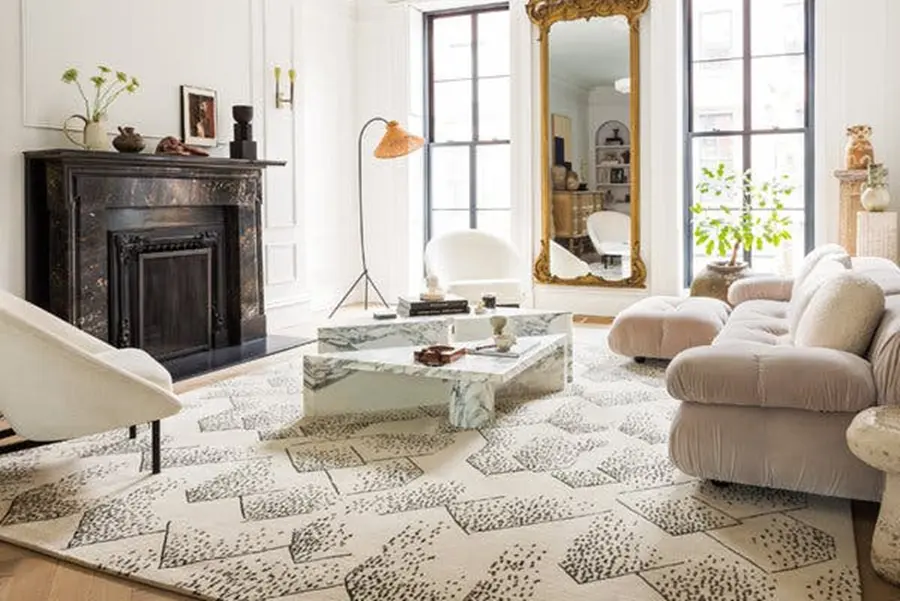
A Brink Ivory wool-and-silk rug by Kelly Wearstler for the Rug Company extends under the front feet of a sofa, while smaller objects, like the end table and floor lamp, sit on the bare wood floor for stability.
Consider Indoor-Outdoor Options
If spills and stains from children and pets are a concern, it may be a good idea to choose an indoor-outdoor rug made from a synthetic material like solution-dyed acrylic, polypropylene or PET (polyethylene terephthalate), which are now often so soft and appealing that they can be hard to distinguish from indoor-only materials.
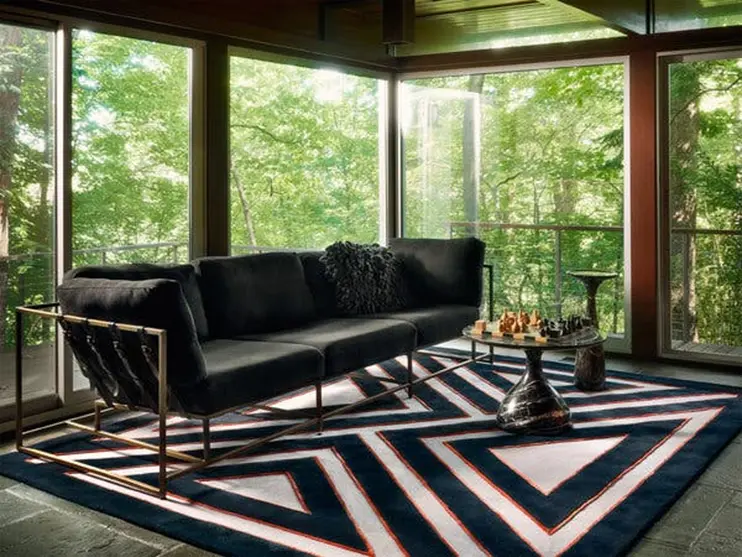
Don’t Forget the Rug Pad
It’s tempting to bring a rug home and put it down immediately, but there’s a step you shouldn’t skip: putting a nonslip rug pad underneath
Cut the pad to a size slightly smaller than the carpet. A general rule is that it should be trimmed about an inch shorter than the rug on all sides, to provide maximum grip while preventing a visible change in level where the rug transitions from pad to floor.
Rug pads offer a touch of additional cushioning, Ms. Hopf said. But their real utility is more “about keeping it in place and preserving the life of the carpet,” she said.In other words, it ensures that your new rug won’t slide like a banana peel.

